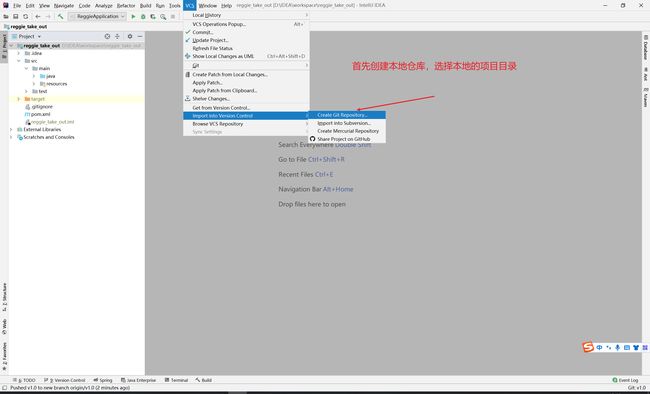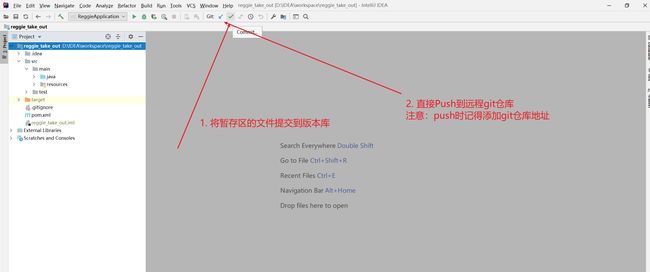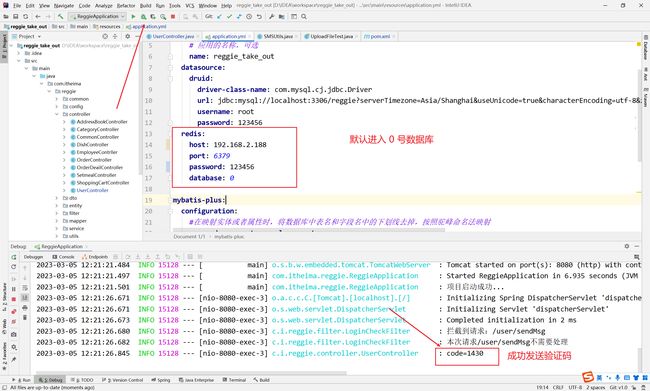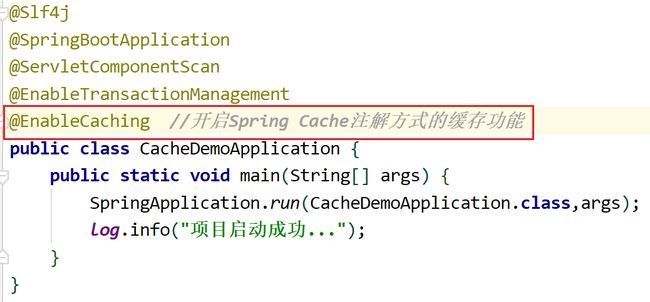Java项目实战——瑞吉外卖Day07(优化篇一)
- 为什么要进行缓存优化?
如果用户数量大,系统访问量大,那么频繁访问数据库,系统性能下降,用户体验差。
使用Git管理代码
1. 环境搭建
① maven坐标
在项目的pom.xml文件中导入Spring data redis的maven坐标:
<dependency>
<groupId>org.springframework.bootgroupId>
<artifactId>spring-boot-starter-data-redisartifactId>
dependency>
②、配置文件
spring
redis:
host:172.17.2.94
port: 6379
password: root@123456
database: 0
③、配置类
在项目中加入配置类RedisConfig:
@Configuration
public class RedisConfig extends CachingConfigurerSupport {
@Bean
public RedisTemplate<Object,Object> redisTemplate(RedisConnectionFactory connectionFactory){
RedisTemplate<Object,Object> redisTemplate = new RedisTemplate<>();
//默认的Key序列化器为: JdkSerializationRedisSerializer
redisTemplate.setKeySerializer(new StringRedisSerializer());
redisTemplate.setConnectionFactory( connectionFactory) ;
return redisTemplate;
}
}
可以用StringRedisTemplate就不用配置类
2. 缓存短信验证码
① 实现思路
前面我们已经实现了移动端手机验证码登录,随机生成的验证码我们是保存在HttpSeesion中的。
② 代码改造
现在我们需要改造为验证码缓存在Redis中,具体的实现思路如下:
1、 在服务端UserController中注入RedisTemplate对象,用于操作Redis
@Autowired
private RedisTemplate redisTemplate;
2、 在服务端UserController的sendMsg方法在,将随机生成的验证码缓存到Redis中,并设置有效期为5分钟
//将生成的验证码缓存到Redis中,并且设置有效期为5分钟
redisTemplate.opsForValue().set(phone,code,5, TimeUnit.MINUTES);
3、在服务端UserController的login方法中,从Redis中获取缓存的验证码,如果登录成功则删除Redis中的验证码
//从redis中获取保存的验证码
Object codeInSession =redisTemplate.opsForValue().get(phone);
//如果用户登录成功则删除Redis中缓存的验证码
redisTemplate.delete(phone);
③ 功能测试
bug解决【java.io.IOException: 您的主机中的软件中止了一个已建立的连接。】
**方法:**把Linux里面的Redis的配置里保护模式改成no,在设置一下密码就可以了
修改redis的守护进程为no ,不启用
127.0.0.1:6379> config set daemonize “no”
OK修改redis的保护模式为no,不启用
127.0.0.1:6379> config set protected-mode “no”
OK设置redis密码–>查看为 get
127.0.0.1:6379> config set requirepass 123456
3. 缓存菜品数据
① 实现思路
前面我们已经实现了移动端菜品查看功能,对应的服务端方法为DishController的list方法,此方法会根据前端提交的查询条件进行数据库查询操作。在高并发的情况下,频繁查询数据库会导致系统性能下降,服务端响应时间增长。现在需要对此方法进行缓存优化,提高系统的性能。
具体的实现思路如下:
② 代码改造
1、改造DishController的list方法,先从Redis中获取菜品数据,如果有则直接返回,无需查询数据库;如果没有则查询数据库,并将查询到的菜品数据放入Redis。
@Autowired
private RedisTemplate redisTemplate;
List<DishDto> dishDtoList=null;
//动态构造Key
String key="dish_"+dish.getCategoryId()+"_"+dish.getStatus();
//先从redis中获取缓存数据
dishDtoList= (List<DishDto>) redisTemplate.opsForValue().get(key);
if(dishDtoList!=null){
//如果存在,则直接返回,无需查询数据库
return R.success(dishDtoList);
}
...
...
...
//如果不存在,则查询数据库,并且将查询到的菜品数据添加到缓存中
redisTemplate.opsForValue().set(key,dishDtoList,60, TimeUnit.MINUTES);
2、改造DIshController的save和update方法,加入清理缓存的逻辑
//清理所有菜品的缓存数据
//Set keys = redisTemplate.keys("dish_*");
//redisTemplate.delete(keys);
//清理某个分类下面的菜品缓存数据
String keys = "dish_" + dishDto.getCategoryId() + "_1";
redisTemplate.delete(keys);
**注意:**在使用缓存过程中,要注意保证数据库中的数据和缓存中的数据一致,如果数据库中的数据发生变化,需要及时清理缓存数据。
③ 功能测试
4. Spring Cache
① Spring Cache介绍
Spring Cache 是一个框架,实现了基于注解的缓存功能,只需要简单地加一个注解,就能实现缓存功能。
Spring Cache提供了一层抽象,底层可以切换不同的cache实现。具体就是通过CacheManager接口来统一不同的缓存技术。
CacheManager是Spring提供的各种缓存技术抽象接口。
针对不同的缓存技术需要实现不同的CacheManager:
② Spring Cache常用注解
在Spring boot项目中,使用缓存技术只需在项目中导入相关缓存技术的依赖包,并在启动类上使用**@EnableCaching开启缓存支持**即可。
例如,使用Redis作为缓存技术,只需要导入Spring data Redis的maven坐标即可。
③ Spring Cache使用方式
在Spring Boot项目中使用Spring Cache的操作步骤(使用redis缓存技术)
1、 导入maven坐标
spring-boot-start-data-redis、spring-boot-starter-cache
2、配置application.yml
spring:
cache:
redis:
time-to-live: 1800000 #设置缓存有效期
3、在启动类上加入@EnableCaching注解,开启缓存注解功能
4、在Controller的方法上加入@Cacheable、@CacheEvict等注解,进行缓存操作
5. 缓存套餐数据
① 实现思路
前面我们已经实现了移动端套餐查看功能,对应的服务端方法为SetmealController的list方法,此方法会根据前端提交的查询条件进行数据库查询操作。在高并发的情况下,频繁查询数据库会导致系统性能下降,服务端响应时间增长。现在需要对此方法进行缓存优化,提高系统的性能。
具体的实现思路如下:
1、导入Spring Cache和Redis相关maven坐标
2、在application.yml中配置缓存数据的过期时间
3、在启动类上加入@EnableCaching注解,开启缓存注解功能
4、在SetmealController的list方法上加入@Cacheable注解
5、在SetmealController的save和delete方法上加入CacheEvict注解
② 代码改造
在pom.xml文件中导入maven坐标:
<dependency>
<groupId>org.springframework.bootgroupId>
<artifactId>spring-boot-starter-cacheartifactId>
dependency>
在application.yml中配置缓存数据过期时间:
cache:
redis:
time-to-live: 1800000 #设置缓存数据过期时间
在启动类上加入@EnableCaching注解:
在SetmealController的list方法上加入@Cacheable注解:
@Cacheable(value = "setmealCache",key = "#setmeal.categoryId+'_'+#setmeal.status")
在update、add、delete方法上添加注解,清除缓存
@CacheEvict(value = "setmealCache",allEntries = true)
注意:要让 R 实现 Serializable 接口(序列化),否则序列化数据传不到redis上。









